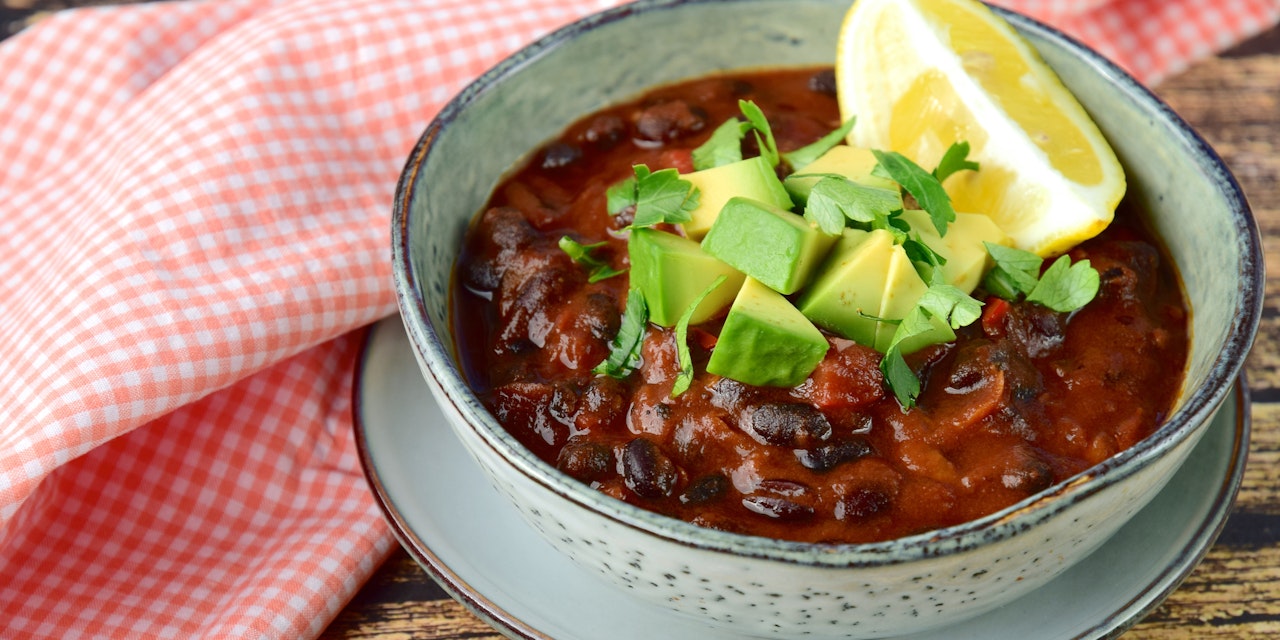Food Synergy: Nutrients That Are Powerful Together
Science suggests that selecting nutrient-rich foods and eating them together can maximize digestion and dietary impact in what’s called food synergy.
- Published: 2/11/2021
- Categories:
- 4 min. read

- Published: 2/11/2021
- Categories:
- 4 min. read
Just because we consume foods or supplements, doesn’t mean that we’re absorbing all of their nutrients. Scientific evidence suggests that selecting nutrient-rich foods and eating them together can maximize digestion and dietary impact in what’s called food synergy. Learn what foods pack a powerful nutrient punch when paired together.
Food synergy
Step into any pharmacy, grocery store, or health shop and you’ll see that individual nutrients have gained a lot of attention as a way to prevent disease and boost health. Yet more recent observations suggest that when a nutrient is on it’s own (vitamin C for example) it may not be as beneficial as when combining it with other nutrients or food properties (1).
Single nutrients that are taken as supplements or added to foods may be beneficial when there is a deficiency or lack of availability -- such as in the case of not being able to access a well balanced diet (1). However, eating whole foods appears to have a greater benefit than taking nutrient supplements.
Food synergy is the concept that a relationship exists between certain aspects of food and when combined, they are better absorbed and used by our bodies. Overall food combinations and variety can determine long-term health. A diet pattern, such as a Mediterranean diet, can help improve health overtime whereas a Western diet pattern (processed foods, high sugar, high fat, high sodium) can worsen health over time (2).
Bioavailability: what it means
Bioavailability is a big word that means how well nutrients are absorbed. Just because you eat nutritious foods, doesn’t mean that your body can absorb and assimilate (take in and use) all the nutrients. This is because there are many factors such as processing and cooking, how well your digestive system absorbs the nutrients and brings them to your cells, and what foods you combine (3).
Studies suggest that our bodies use only about 5 percent of the manganese we consume (whole grains, oysters, nuts, soy, green leafy vegetables) and 30 to 40 percent of the calcium (dairy, green leafy vegetables, non-dairy alternatives fortified with calcium) (3).
The way you absorb nutrients can also vary according to your needs. For instance, women will most likely take in more iron during their menstruation, in order to replenish what’s lost. Or if you’re recovering from a surgery, your body is more likely to absorb more protein to help rebuild. Even your friendly gut bacteria can influence the way you absorb nutrients (4).
To boost bioavailability, you can pair certain foods.
Perfect nutrient pairings
Check out these all star synergies to boost bioavailability. Having them in the same meal or snack will help increase their absorption.
Vitamin C and iron
For those of you who prefer to eat plant-based, the form of iron found in your foods is called nonheme. This type of iron is not absorbed as well as the type that’s found in animal products such as beef. You need iron for growth and development and to get oxygen to all parts in the body (5). Pairing iron with vitamin C will help improve the absorption.
- Nonheme iron: legumes (beans and lentils), nuts, seeds, whole grains.
- Vitamin C: citrus fruit (oranges, lime, lemon), strawberries, bell pepper, broccoli.
Vitamin D and calcium
Calcium has gained a lot of attention as being an essential nutrient for strong bones. It’s also needed to keep your nerves, muscles, and heart healthy (6). Vitamin D, known as the sunshine vitamin, activates calcium absorption.
- Vitamin D: eggs, mushrooms, fortified milk and milk alternatives.
- Calcium: dairy (milk, yogurt, low-fat cheese), green leafy vegetables, fish with bones (sardines, canned salmon).
Lycopene and healthy fats
Lycopene is part of the vitamin A carotenoid family, responsible for the bright reds, pinks, and oranges in foods such as tomato and carrots. Lycopene is an antioxidant that has been suggested to help prevent certain cancers such as prostate cancer (7). Since lycopene is fat soluble, pairing it with healthy fat helps boost the absorption.
- Lycopene: tomato (especially cooked), watermelon, grapefruit, red pepper.
- Healthy fats: fatty fish (salmon, tuna, mackerel) avocado, olive oil, nuts, seeds.
Focus on whole foods
Focusing on foods that's close to the way it's found in nature (potatoes versus french fries) will help improve overall health and nutrient absorption. Practicing food synergy works best when you choose foods found in their natural form and eat a wide variety of them. Rather than relying on supplements, try to think of them as “supplements” to a healthy diet.
7 references (hide)
All of the content and media on Lifesum is created and published for information purposes only. It is not intended to be used as a substitute for medical advice or treatment. Users should always consult with a doctor or other health care professional for medical advice. If you have or think you are at risk of developing an eating disorder, do not use the Lifesum app and seek immediate medical help.